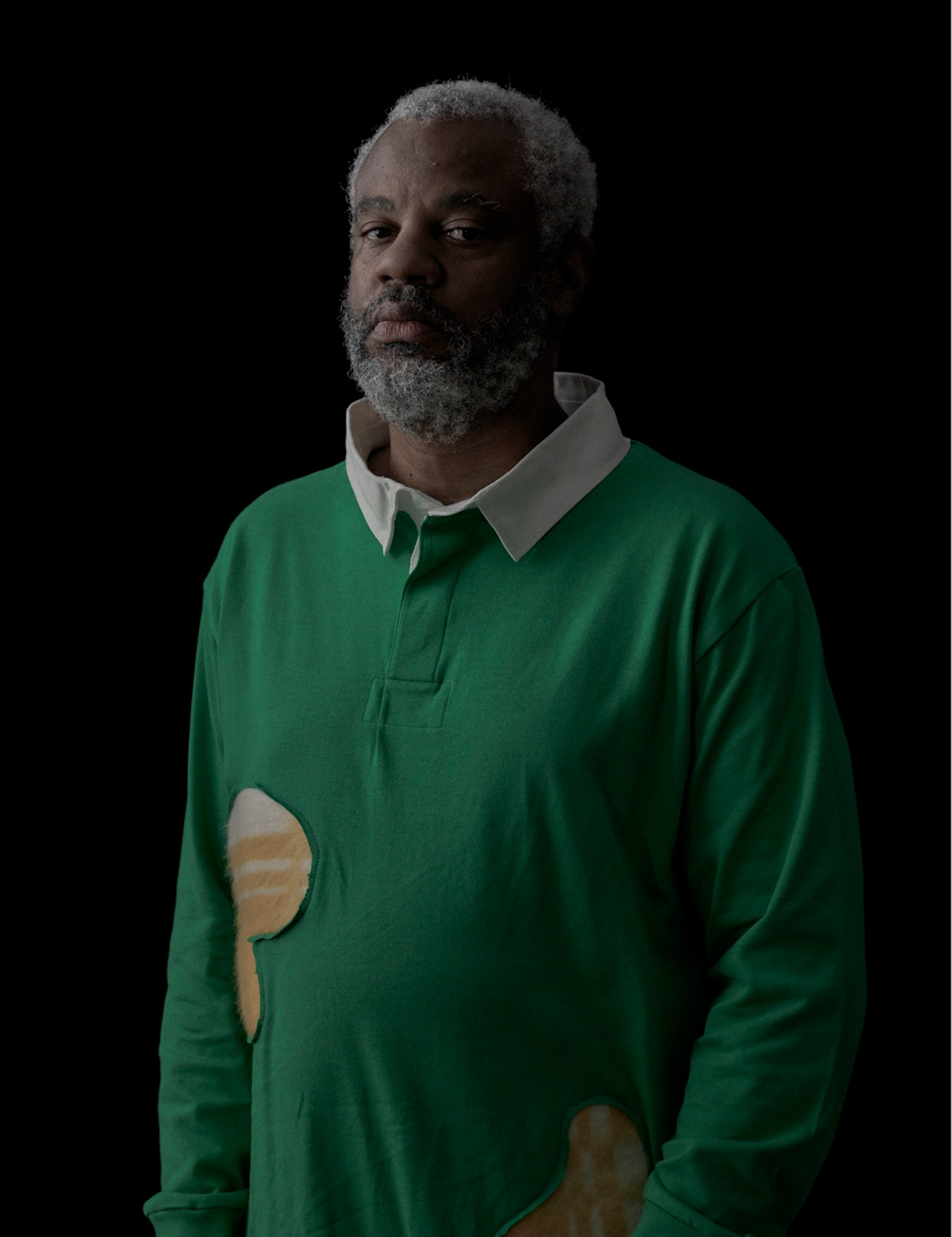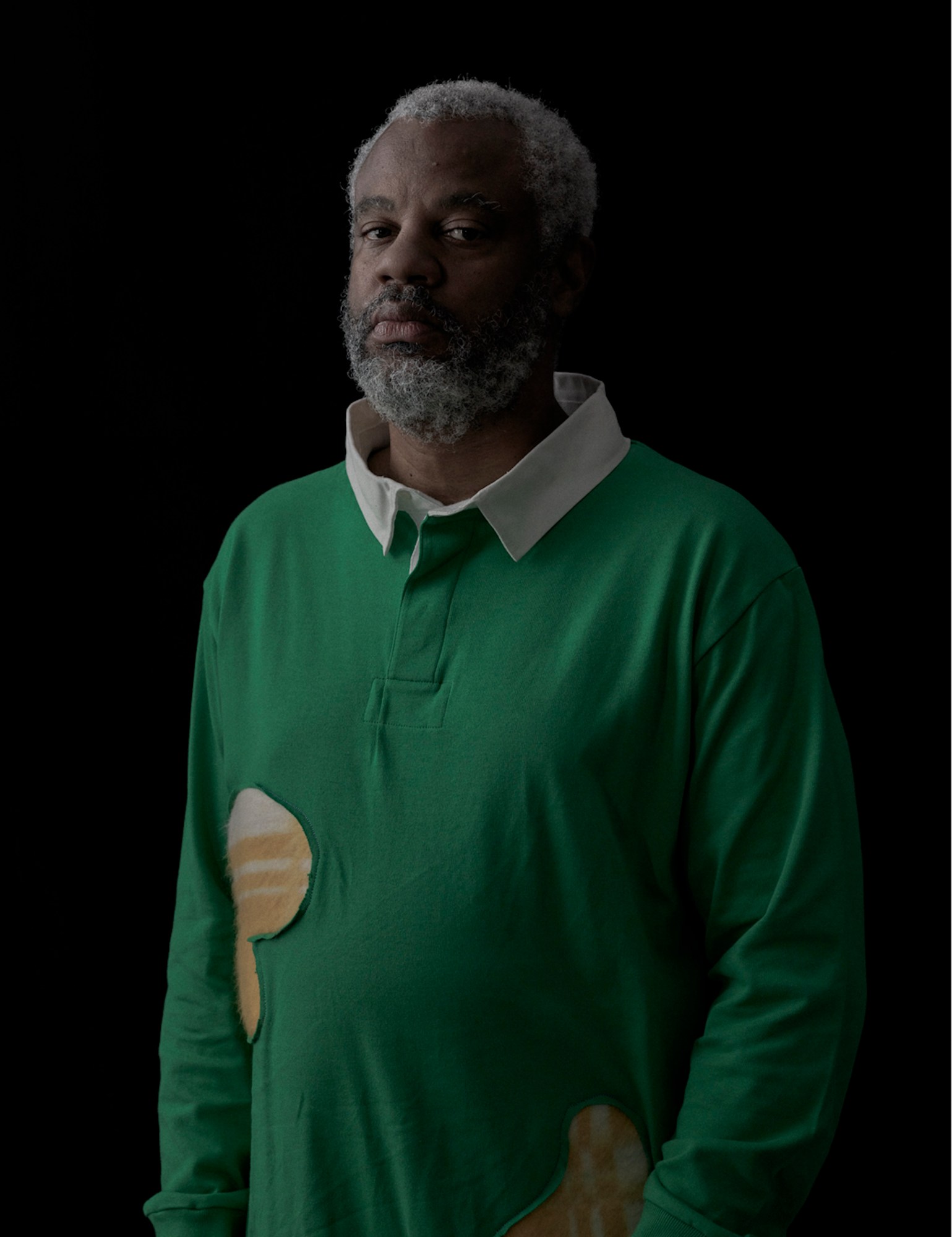This story originally appeared in i-D’s The Darker Issue, no. 365, Winter 2021. Order your copy here.
Hamza Walker is the Chicago- born director of the non-profit arts space LAXART in Los Angeles and is formerly the director and associate curator of the University of Chicago’s Renaissance Society. He staged Kara Walker’s first solo show at the Renaissance in 1997 and the show’s seminal catalogue serves as the blueprint for all of Kara’s books that followed. He currently works and lives in Los Angeles.
The Kara Walker book that the Renaissance Society published in 1997 for her first solo show is amazing.
Kara and I just did an interview Monday, and it was fun to go down memory lane. I’m not one to be nostalgic at all, but it’s funny looking at that book and publication because my first question to her about the show was about her writing. The catalogue is more of an artist’s book. People rarely ask fundamental questions when they set out on editorial projects, and with Kara, the reason that book took that form is because I saw her writings and then knew that you don’t have to speak for Kara, let Kara speak herself and leave that shit alone. But also there were very few people willing to engage with the subject matter of Kara’s work at the time.

It’s funny that you lead with her writing because I wrote about it last year and titled the piece Words as Images, which speaks to both a visual and literary lexicon. The work is a complete circle. It reminds me of another conversation I was having recently with an artist who says that “architecture is the most complete art form,” which makes me think of artist-writers as a complete architecture, because they can describe and orient the viewer inside a kind of consciousness but also provoke that feeling visually.
I like that. I thought it would be best, rather than including an essay by a scholar, that it should instead be a facsimile of one of her sketchbooks, to let her writings fill it up so that you can get more of her voice and understand that these characters are coming out of a context that is all flushed out.
It makes me think about the development and expansion of narrative art movement, specifically about the post-Black movement with Thelma Golden and Glenn Ligon at the Studio Museum in the late 90s and early 2000s. The 90s generally was such a specific pocket of time that. It’s under conceptualised but heavily referenced aesthetically, which is a shame.
I wrote for the Studio Museum’s Freestyle catalogue in 2001 and it was hard because I hit a wall. It was seminal because it was dissolving into a more biographical thing which I didn’t want to deal with at the time. I didn’t have the ideological wherewithal to make a more cogent argument because I didn’t have the chops.
But you had the probing antennas to pick up that that was the case…
Yeah, I continued to grapple with post-Black for another ten years and nobody knew it.
Let’s switch gears, what’s your relationship to architecture?
What do you mean? I live, work, and breathe in it. Can you have a non-relation to architecture? In a professional sense, it’s what I have to engage in terms of mounting exhibitions so it’s unavoidable and out of conflict you can have a productive, constructive, or instructive result and learn how to work with what you got.
Constraints…
Yeah, exactly, and sometimes in the most literal sense. Walls have sockets in them, light switches, and thermostats and so it’s more the question of how often we are working in purpose-built environments. I just saw the Jacqueline Humphries show at the Wexner Art Center in Columbus, Ohio and what makes it is the dialogue that she has with the Peter Eisenman designed building, that’s a kind of architecture you’re forced to respond to. The building is a provocation but once you understand that there are lots of possibilities that you wouldn’t be able to think of had it been held in a regular white cube. It’s a kind of friction that produces something better than what could have been a straightforward painting show.
The tension you’re talking about impacts you at every juncture with a place like the Wexner.
It’s a complicated affair that involves a kind of self-consciousness and mediation.
Credits:
Photography Arthur Jafa
Fashion Janae Roubleau
Hair Nikki Nelms
Make-up Autumn Moultrie at The Wall Group using Pat McGrath Labs
Photography assistance G Askew, Cris Ian Garcia and Coy Gutierrez
Hair assistance Jordana David
Executive production Melinda Nugent
Line production Amanda Leya Andrews
Production coordinators Kaley Pearce
Production assistance Maryam Eldeeb, Alex Jeter and Anthony Corleto
Casting director Samuel Ellis Scheinman for DMCASTING

